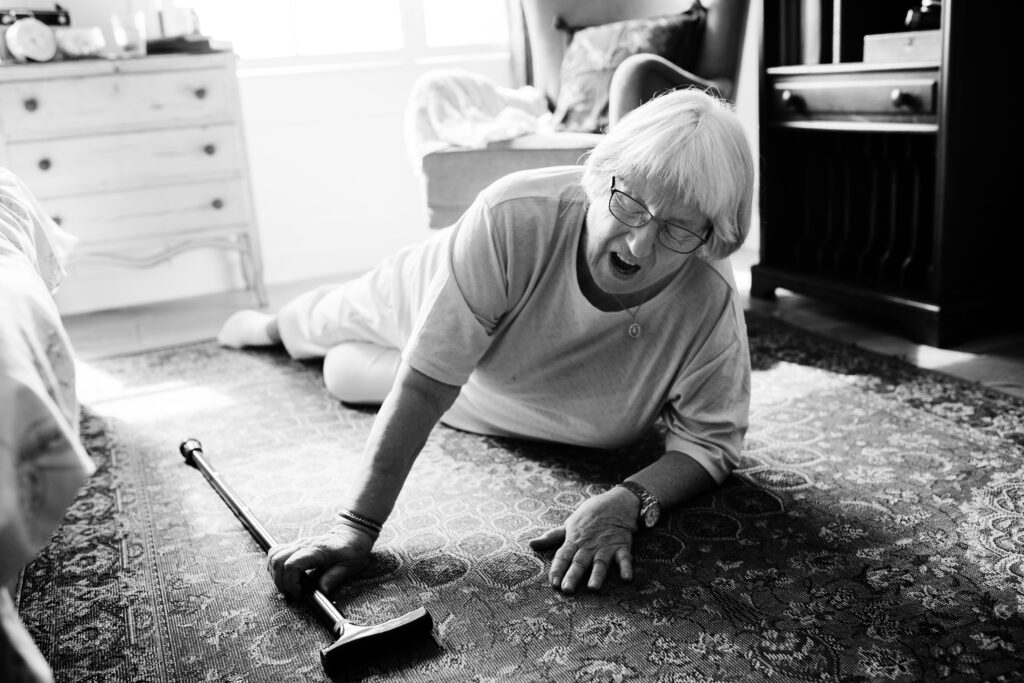Introducton
Knowing when to move a loved one to assisted living can be difficult, but it’s often necessary when daily tasks become too challenging to manage alone. This guide highlights five key signs that it may be time, helping families make a confident, compassionate decision to ensure proper care and a better quality of life.
Table of Contents
What Is Assisted Living?
Assisted living is a residential option designed to support seniors who need help with daily tasks but still wish to maintain a degree of independence. Unlike nursing homes, which focus heavily on medical care, assisted living emphasizes a balance between assistance and personal freedom, providing a community environment with tailored services. These facilities offer help with activities like bathing, dressing, and medication management, while also fostering social connections through shared spaces and organized events. Understanding what assisted living entails helps families assess whether it fits their loved one’s current and future needs, making it a versatile solution for many aging individuals.

Sign 1: Difficulty with Daily Activities
One of the first signs that assisted living might be needed is when a senior struggles with everyday tasks. Simple actions like cooking a meal, managing personal hygiene, or keeping the house tidy can become overwhelming as physical strength or cognitive ability declines. For instance, forgetting to turn off the stove or needing help to get dressed could indicate a shift in capability. This struggle often leads to frustration or safety risks, such as falls in the bathroom. Assisted living steps in with trained staff to assist with these activities, ensuring safety while allowing seniors to retain some control over their routines. Families noticing these challenges should consider a visit to an assisted living facility to explore available support.

Sign 2: Frequent Health Concerns
Recurring health issues can signal the need for assisted living, especially when managing them at home becomes unmanageable. Conditions like chronic illnesses, frequent infections, or mobility issues may require regular monitoring and care that exceeds what family caregivers can offer. For example, a senior who needs daily medication adjustments or physical therapy might benefit from the round-the-clock attention provided in these communities. Assisted living facilities often have healthcare professionals on site to address these needs promptly, reducing the stress on family members. Recognizing this sign early can prevent emergencies and improve the senior’s overall well-being.

Sign 3: Social Isolation
Loneliness can creep in as seniors age, particularly if they live alone or have limited social interactions. This isolation might manifest as withdrawing from hobbies, skipping social calls, or showing signs of depression. Assisted living combats this by offering a vibrant community where residents can connect through group activities, meals, and events. The shift from a solitary life to a supportive social setting can lift spirits and enhance mental health. Families should watch for changes in their loved one’s social behavior, as assisted living could provide the companionship they’re missing, making it a vital consideration.

Sign 4: Safety Risks at Home
Safety hazards in the home are a clear indicator that assisted living might be necessary. Tripping over clutter, struggling with stairs, or leaving doors unlocked can pose serious risks as mobility or memory fades. These incidents might not always result in injury, but the potential for harm increases over time. Assisted living facilities are designed with safety in mind, featuring handrails, emergency call systems, and accessible layouts. For families worried about their loved one’s safety, touring an assisted living community can reveal how these environments mitigate risks effectively.

Sign 5: Caregiver Burnout
When family members take on the role of primary caregivers, exhaustion can set in, affecting both the caregiver and the senior. Constant worry, sleepless nights, and the pressure of managing care can lead to burnout, reducing the quality of support provided. Assisted living offers a solution by transferring some responsibilities to professionals, allowing family members to resume a supportive rather than primary role. This transition can strengthen family relationships and ensure the senior receives consistent care. Recognizing signs of caregiver fatigue is crucial, as assisted living can restore balance for everyone involved.

Benefits of Assisted Living
Choosing assisted living brings numerous advantages that cater to the evolving needs of seniors. Beyond the practical help with daily tasks, these communities promote a sense of belonging through social opportunities like fitness classes and outings. The presence of trained staff ensures health concerns are addressed quickly, while the structured environment reduces stress for both residents and families. Additionally, assisted living often includes amenities like housekeeping and transportation, freeing seniors to enjoy their retirement. These benefits make it a holistic option, enhancing physical, emotional, and social well-being.
How to Assess the Need for Assisted Living
Evaluating whether assisted living is the right choice involves a thoughtful process. Start by observing your loved one’s daily life for the signs mentioned above, such as struggles with tasks or isolation. Engage healthcare professionals, like doctors or geriatric specialists, to get an expert opinion on their needs. Involve the senior in discussions to respect their preferences, which can ease the transition. Visiting several assisted living facilities can also provide insight into what each offers, helping you match their services to your loved one’s requirements. This collaborative approach ensures a decision that feels right for everyone.
Comparing Assisted Living to Other Options
Assisted living differs from other senior care choices, and understanding these differences aids in decision-making. Independent living suits those who need minimal help and value privacy, while skilled nursing facilities cater to those with complex medical needs. Home care offers personalized support at home but may not address social isolation. Assisted living strikes a middle ground, providing assistance and community without the intensity of nursing home care. Comparing these options, often detailed in resources like https://ageshine.com/best-levels-of-senior-care/, can clarify which path aligns with your loved one’s current state.
Financial Considerations
Cost is a significant factor when considering assisted living, as prices vary based on location and services. Monthly fees typically range from $3,000 to $6,000, covering room, board, and care, though additional services may add to the bill. Families should review their budget, explore insurance options like long-term care policies, and investigate government programs such as Medicaid waivers. Some facilities offer financial advisors to assist with planning. Understanding these costs upfront helps avoid surprises and ensures the chosen assisted living option is sustainable.
Transitioning to Assisted Living
Moving to assisted living requires careful planning to make the transition smooth. Start by selecting a facility that matches your loved one’s needs and preferences, then schedule a tour to familiarize them with the space. Packing personal items like photos or furniture can create a sense of home. Communicate openly with staff about their health and routines to ensure continuity of care. Support from family during the first few weeks can ease adjustment, turning this change into a positive new chapter.
External Resources
For additional insights, explore reputable sources like the National Institute on Aging for research on senior care options. This site offers data on assisted living benefits and challenges, complementing your decision-making process with expert perspectives.
Conclusion
Recognizing when assisted living is needed empowers families to act with confidence and care. The five signs—difficulty with daily activities, frequent health concerns, social isolation, safety risks, and caregiver burnout—serve as guideposts to assess this need. Assisted living offers a supportive, community-focused solution that enhances quality of life while alleviating family stress. By evaluating needs, comparing options, and planning the transition, you can ensure your loved one thrives in this new environment. Take the first step today by observing these signs and exploring assisted living possibilities.






